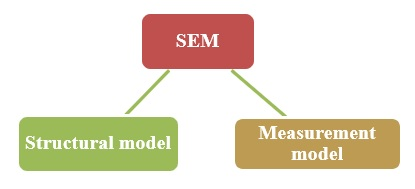In recent years, marketing experts have begun to use the strong statistical analysis method known as structural equation modeling (SEM). It enables researchers to examine intricate correlations between several factors and comprehend the underlying workings. We will give an outline of SEM and its uses in marketing research in this article.
What is Structural Equation Modeling?
A statistical analysis modeling method called structural equation modeling (SEM) combines aspects of path analysis and factor analysis. It is a thorough method for examining intricate connections between latent (unobserved) variables and seen variables. SEM offers a framework for evaluating the fit of a theoretical model to empirical data and testing causal link assumptions.
The capacity of SEM to simultaneously estimate various correlations among variables while taking measurement error into account gives it a significant edge over conventional statistical methods. To gain a more complex knowledge of the underlying mechanisms, it enables researchers to study both the direct and indirect impacts of variables on one another.
The Components of SEM
SEM consists of two main components: the measurement and structural models.

- Structural Model: This model represents the relationships between the latent constructs. It outlines the hypothetical causal connections and directing routes between the latent constructs. The structural approach, for instance, would look at the connections between brand loyalty, purchase intent, and customer happiness in marketing research. The structural model estimates the strength and importance of these interactions.
- Measurement Model: The model represents the connections between latent constructs and observable variables. The indicators (observed variables) representing each latent construct must be specified. Customer satisfaction, for instance, can be a latent construct in marketing research that is assessed using metrics like overall satisfaction, loyalty, and willingness to refer. The measurement model estimates the link between the latent constructs and their observed indicators.
Steps in Conducting SEM Analysis
Conducting SEM analysis typically involves the following steps:
- Model Specification: The target population’s information is gathered through market surveys, interviews, or other research techniques. Measurements for latent constructs and observable variables should be included in the data gathered.
- Data Collection: The target population’s information is gathered through market surveys, interviews, or other research techniques. Measurements for latent constructs and observable variables should be included in the data gathered.
- Measurement Model Estimation: Confirmatory factor analysis (CFA) and other approaches are used to estimate the measurement model. By evaluating the goodness-of-fit between the observed data and the postulated model, CFA aids in validating the measurement model.
- Structural Model Estimation: After verifying the measurement model, the structural model is estimated. This requires estimating the parameters that represent the connections between latent components.
- Model Evaluation: Using different fit indices, including the chi-square test, comparative fit index (CFI), and root mean square error of approximation (RMSEA), researchers evaluate the overall fit of the SEM model to the data. These indices reveal how well the model matches the data and whether it has to be changed or kept.
- Model Modification: Researchers can alter the model by adding or eliminating pathways, permitting correlated mistakes, or integrating additional elements if the initial model does not satisfactorily suit the data. This iterative process is continued until a satisfactory model fit is attained.
Applications of SEM in Marketing Research

Numerous structural equation modeling (SEM) applications in marketing research enable researchers to obtain important insights into the intricate relationships and mechanisms operating in the market. Let’s examine a few specific SEM uses in marketing research:
- Consumer Behavior Analysis: The study of consumer behavior is frequently conducted using SEM, which offers a deeper knowledge of the variables affecting consumers’ attitudes, perceptions, intentions, and purchasing behavior. The links between numerous dimensions, including product qualities, brand image, price sensitivity, social influence, and buying behavior, can be studied by researchers.
- Advertising and Communication Effectiveness: SEM is crucial for determining the performance of marketing and communication initiatives. Researchers can examine the effects of various advertising channels, message content, medium, and creative elements on consumer impressions of brands and buy intentions. By identifying the best channels and content for reaching their target market, SEM enables advertisers to maximize the success of their marketing campaigns.
- Market Modeling and Forecasting: Market simulation models that replicate the effects of marketing efforts on market outcomes can be created using SEM. Market share, sales, and other performance measures for marketing mix elements (price, advertising, and promotions) can be estimated. This makes it possible for marketers to predict the possible results of various marketing techniques and make data-driven choices.
Conclusion
A useful technique for marketing researchers is structural equation modeling (SEM). It offers a thorough framework for deciphering the underlying mechanisms and assessing intricate correlations between variables. SEM provides insights into consumer behavior, brand equity, advertising effectiveness, market segmentation, and customer happiness by evaluating various relationships and compensating for measurement errors. SEM will probably continue to be a crucial technique for exploring and comprehending the industry’s complexities as marketing research develops.
Maction is a leading market research agency that provides the best technology-driven survey platform available. With our considerable experience, we can help you gain the suitable consumer insights necessary for designing your creative strategy.
Contact the expert consultants at Maction Consulting today.


